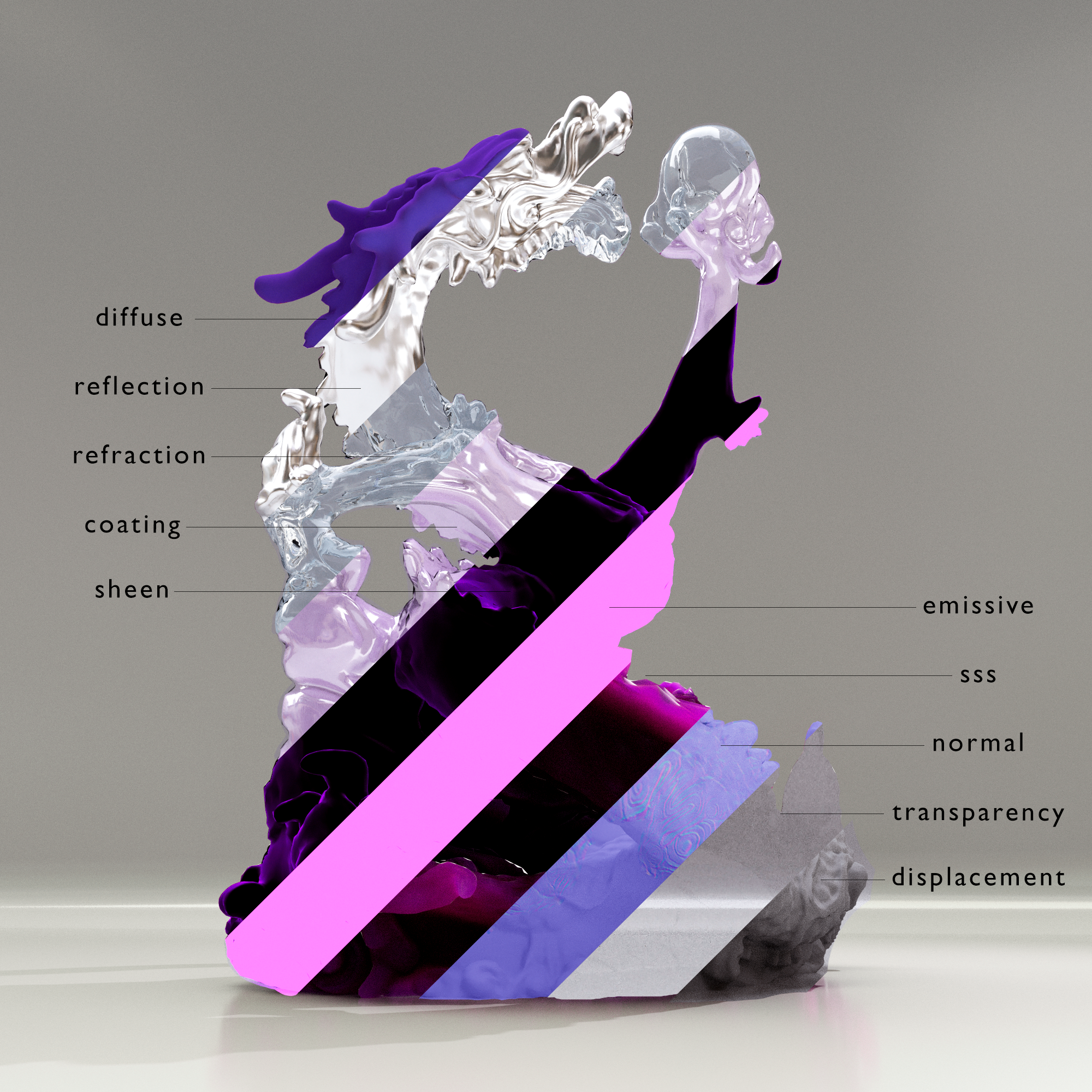About Uber Shader

The Uber Shader is a multi-purpose shader designed for creating simple to complex realistically looking materials. This powerful and simple-to-use tool is now the basis for the shared Material Library (Blender, 3ds Max and Maya) for AMD Radeon™ ProRender updated with new materials.
The Uber Shader combines several inputs to generate one big shader that makes it easy to produce physically-based images in any lighting conditions using simple and straightforward controls. Thus it alleviates the need to combine and group multiple shader nodes, and keeps the shading network visible, manageable and controllable, while streamlining the workflow. 3D artists and CAD designers working in Uber Shader do not have to think about keeping the node groups working correctly, as this is taken care of in the Uber Shader itself.
Rich in functionality, the Uber Shader includes a number of adjustable components, or layers, that group certain properties of physical materials. Each component has a weight to control to what extent its properties will contribute to the overall appearance of the resulting Uber material. All this adds more flexibility to the shading process. Uber Shader is designed to be adaptable to many workflows. For instance, with the Uber Shader you can use either Metallic/Roughness or Specular/Glossiness workflow.
The Uber Shader channels for different parameters are described in the following sections:
In AMD Radeon ProRender plug-ins, the Uber Shader comes with physically based presets and defaults helping to create materials. For details on how to use Uber Shader in Blender, 3ds Max and Maya, see the topics for the corresponding 3D graphics software.